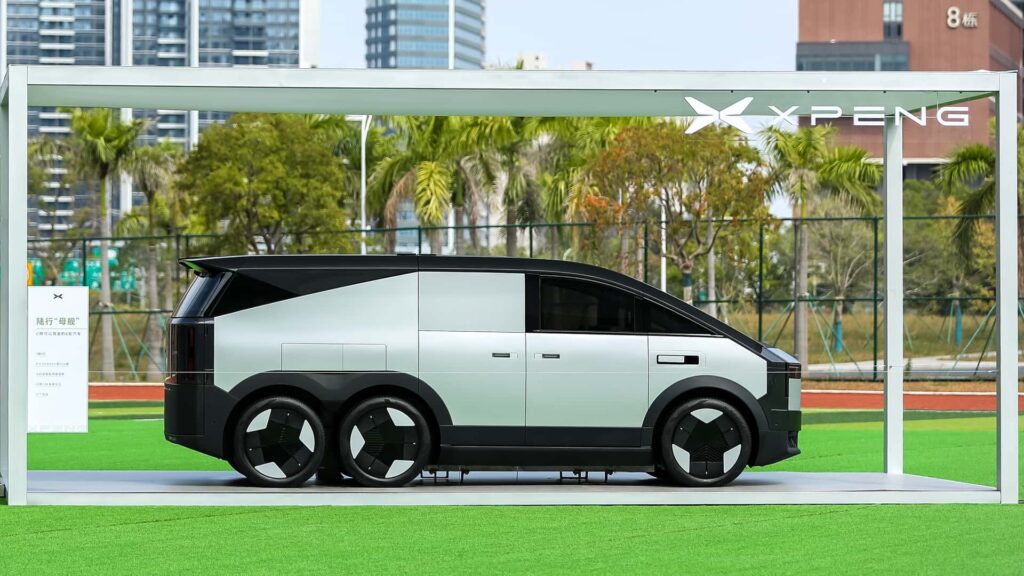
- Xpeng has announced its plan to launch its first extended range electric vehicle in 2026.
- The Kunpeng Super Electric System can deliver up to 870 miles of range (1,400 km) with a full battery and tank.
- Xpeng may be shifting to range extenders to bypass the European Union’s new import tariffs for EVs from China.
With automakers changing course and backtracking on their plans to go all electric in the next decade, it isn’t surprising to hear that even carmakers that have only ever built EVs are also shifting their strategy. China’s Xpeng is one such automaker, and its newly announced Kunpeng Super Electric System should considerably broaden the appeal of its vehicles, which have until now all been battery electric vehicles (BEVs or EVs).
This extended-range EV (EREV) powertrain promises 267 miles (430 km) of pure electric range and up to 869 miles (1,400 km) with a full battery and gas tank. While China’s test cycle is more optimistic about range than the U.S. cycle, it’s still an incredible range figure.
It suggests Xpeng is using a battery similar in size to what you’d get in a real EV. This is at odds with Mazda’s approach, for instance. The company essentially halved the MX-30 EV’s battery capacity when it created the range-extender variant.
Photo by: Xpeng
XPENG S5 Liquid-Cooled Ultra-Fast Charging Station
Photo by: Xpeng
Photo by: Xpeng
XPENG Kunpeng Super Electric System
The MX-30 R-EV can only muster 53 miles WLTP on one charge (and around 300 miles with a full tank in our testing) compared to 124 miles for the pure-electric MX-30 with the larger battery. Another automaker adopting a similar approach to Mazda is Ram, whose 1500 Ramcharger range-extender will have a smaller battery than the pure electric 1500 Rev.
So having both a big battery and the comfort of easily refueling to get extra miles should really make these Xpeng range extenders popular. The company also plans to equip these cars with an AI Battery Doctor, which it says will extend the lifespan of the battery pack by up to 30%. All its artificial intelligence functions will go through a 40-core processor, including its Level 4-capable autonomous driving systems.
Xpeng also touts ultra-rapid charging at up to 960 kilowatts of power, which is enough for a charging speed of 1 km per second. When hooked up to a sufficiently powerful (and water-cooled) ultra-rapid charger, it will be able to charge to 80% in just 12 minutes thanks to an 800-volt architecture. Xpeng will also be producing charging stations capable of handling it.
The company claims that when the range extender’s engine fires up, occupants of the vehicle will not be able to feel it since it will only increase interior noise levels by one decibel. This sounds much better than in the Mazda MX-30 R-EV, whose rotary range extender makes its presence felt in the cabin when running, especially under load. The only real downside could be cost, as including a combustion powertrain could make Xpeng’s cars more expensive to produce.
So why do it? Why did a manufacturer that has never put a combustion engine in a vehicle choose to switch now?
One explanation could be to circumvent the new import tariffs imposed by the European Union on Chinese-made EVs. The tariffs do not apply to hybrid vehicles, and if Xpeng can successfully argue these are hybrids it may be able to avoid the 21.3% tariff the EU has placed on its EVs.
This ties in with the news from China that Nio could launch its first hybrid vehicle in 2026 under the Firefly sub-brand, which would be specifically aimed at markets outside of China, primarily Europe and the Middle East. Reuters asked Nio for comment, but the manufacturer declined to say anything other than the fact that Firefly vehicles would have pure-electric powertrains.


